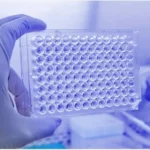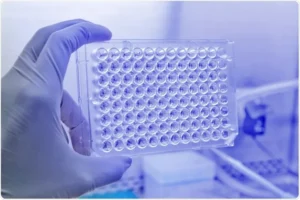Gynae Laparoscopy is a minimally invasive diagnostic surgical procedure that helps inspect the internal organs of the abdomen. It can assist gynaecologists identify conditions such as endometriosis, cysts or tumours in the ovary, ectopic pregnancy, adhesions, urinary tract infections and more with great precision.
Dr Bhumika Shukla is one of the top gynecologists in Noida and holds a gold medalist in MD from King George Medical College, Lucknow. She has further advanced her clinical excellence with fellowship training in Advanced Gynae Laparoscopy. With Niraamaya Clinic, Dr Shukla strives to provide personalized healthcare that other hospitals lack. If you are looking for gynae laparoscopy in Noida, consult Dr. Bhumika Shukla.
What is Laparoscopy?
Laparoscopy is an advanced surgical technique that allows your surgeon to view inside of your pelvis. This minimally invasive surgery is often utilized for diagnosing and treating gynecologic conditions like endometriosis, uterine fibroids, and ovarian cysts.
This procedure involves making a small incision in your abdomen. A laparoscope – a thin, lighted tube with a camera on its end – is then inserted into your abdominal cavity through this incision.
Women’s Specialists of Plano offers this procedure to inspect and analyze the uterus, ovaries, fallopian tubes, bowels and other internal structures. With this sophisticated tool they provide a safe and precise examination for our patients.
The doctor may need to remove any adhesions (scar tissue) that develop in or around the uterus. These adhesions can interfere with the proper functioning of your uterus and other organs.
What are the benefits of Laparoscopy?
Laparoscopy is a minimally invasive surgical option, unlike open surgery which requires large incisions. Surgeons use the laparoscope, an instrument with a long tube with light and camera attached, to view inside your body parts without cutting large openings.
Laparoscopy is used for a variety of surgical treatments, such as appendicitis, gallbladder problems and other abdominal troubles. Additionally, laparoscopy allows surgeons to take tissue samples under the microscope for signs of disease.
General anesthesia is usually administered, putting you to sleep so your provider can work on you. The doctor inserts a laparoscope into a small cut in your belly button and uses it to examine organs inside of you. Then they use special surgical tools to repair or remove any issues found.
How does Laparoscopy work?
Laparoscopy is a surgical procedure that uses an endoscopic camera to examine the pelvis (lower abdomen). It helps doctors diagnose diseases like endometriosis and tubal ligation and provide treatment when necessary.
During a laparoscopy, your doctor will make several small cuts to insert the laparoscope. These cuts are usually about a half-inch long.
Once inserted, the laparoscope is connected to a supply of carbon dioxide gas (known as pneumoperitoneum). This inflates your abdomen so you can see more clearly the organs within it.
In some instances, additional cuts may be made in the lower belly to insert cutting tools and specialized scissors called forceps for taking tissue samples or performing a biopsy. These samples are then examined in a lab for any anomalies.
How does Laparoscopy heal?
The recovery period following a laparoscopy is unique for each patient and depends on several factors, including your general health and any complications that arise.
For a few days following surgery, you may experience some soreness and discomfort around the surgical site, especially when walking or moving your legs and feet. This is completely normal and will subside once you can move more freely again.
Your doctor can provide you with painkillers to take home, or you can use over-the-counter medications like paracetamol or ibuprofen. You may also notice some spotting or bleeding from your vagina.
After your surgery, you should be able to resume work and other usual activities within 1 or 2 days, depending on the type of procedure you had. Be sure to follow your surgeon’s instructions regarding rest, diet and activities carefully.
What are the risks of Laparoscopy?
Laparoscopy is a minimally invasive surgical procedure that can be used to treat problems in the pelvic organs such as the uterus, fallopian tubes and ovaries. It may also be employed in treating endometriosis (women with abnormal tissue in their uterus) or tubal ligation (tie up the fallopian tubes to prevent pregnancy).
Prior to having a laparoscopy, your doctor will inspect you and make sure all of your organs are working optimally. They will perform a physical exam and inquire about any medical history you may have.
A laparoscope, a lighted telescope-like instrument, is inserted through one of several small incisions made in the abdomen. A gas such as carbon dioxide is then pumped into the abdomen to make organs easier to see.



























+ There are no comments
Add yours